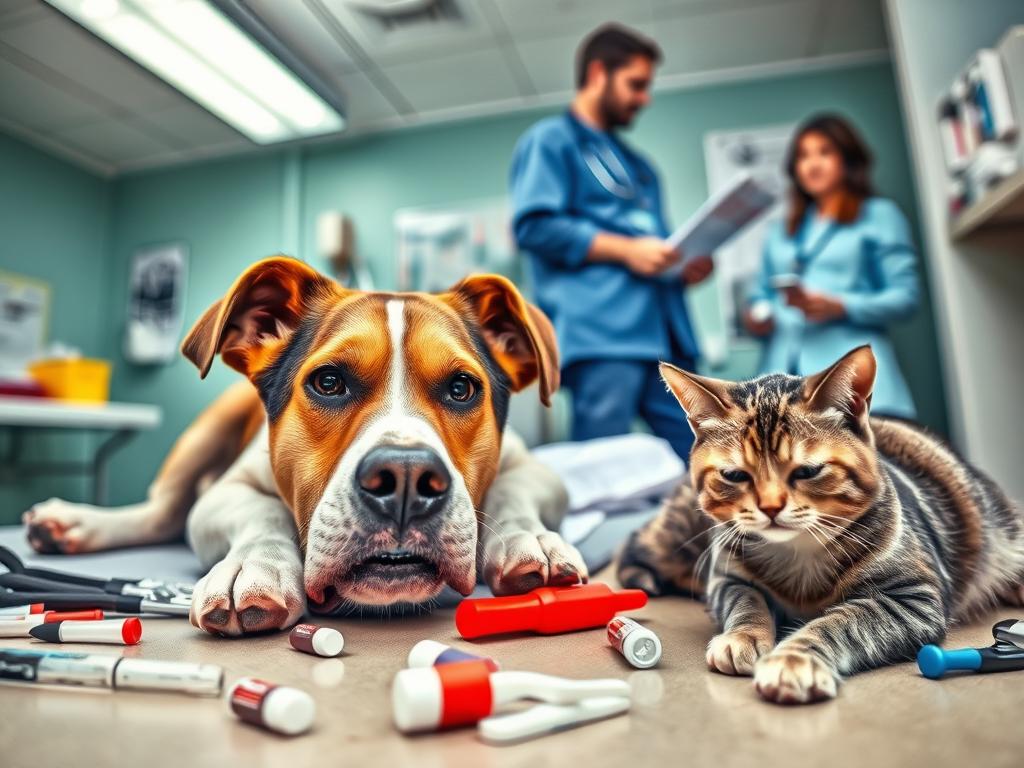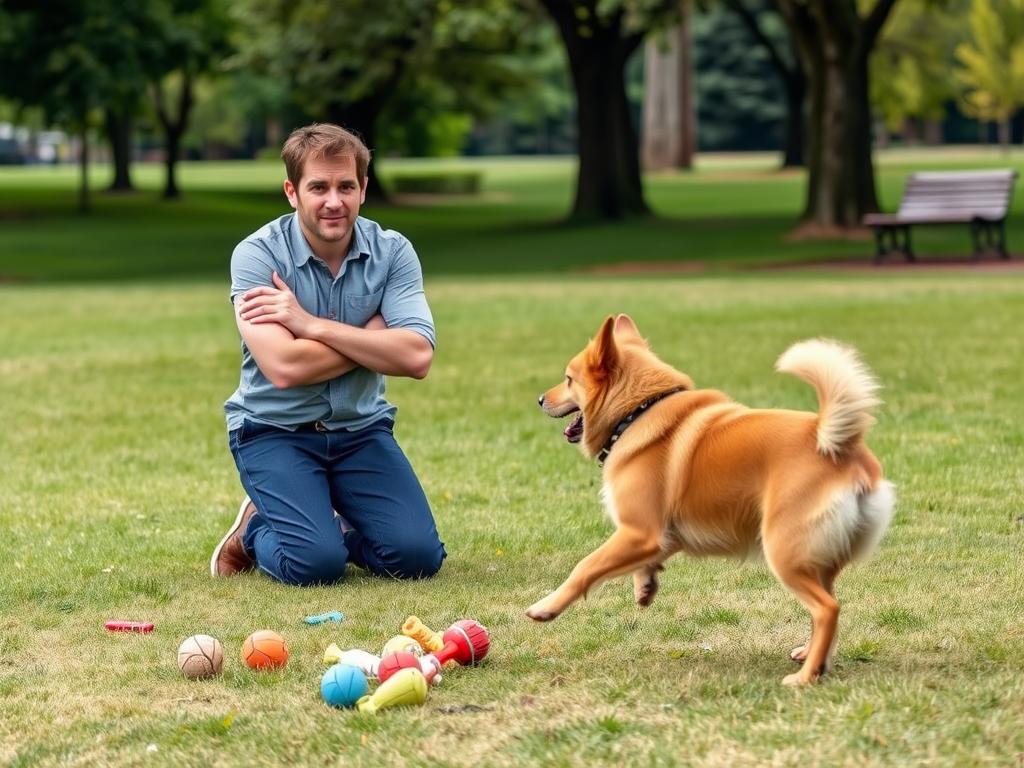Did you know that approximately 45% of emergency veterinary cases in pets are linked to the ingestion of poisonous foods, toxic substances, or foreign objects? This staggering statistic highlights the crucial need for pet owners to recognize Symptoms That Require an Immediate Visit to the Vet. In many cases, time is of the essence, as swift veterinary emergency care can be the difference between life and death for your beloved companion.
When a dog or cat shows signs of distress, such as severe bleeding, difficulty breathing, or seizures, it is essential to seek urgent care without delay. Recognizing these symptoms is vital to preventing serious health conditions that could become fatal. If your pet exhibits any unusual behavior, failure to eat for an extended period, or shows signs of pain, these are clear indicators that an emergency veterinary visit is necessary.
As a responsible pet owner, it’s crucial to be prepared for such emergencies. Understanding what constitutes a veterinary emergency can reduce panic and ensure that you’re ready to act swiftly when needed.
Key Takeaways
- Almost half of pet emergencies stem from ingestion of toxic substances.
- Recognizing signs of severe distress can save your pet’s life.
- Immediate care is essential for symptoms like uncontrolled bleeding and breathing difficulties.
- Being prepared and informed about pet emergencies can alleviate stress during crises.
- Costs of emergency services can vary greatly, emphasizing the need for financial planning.
Understanding the Importance of Immediate Vet Visits
Recognizing the urgency of veterinary visits is essential for ensuring the health and safety of your beloved pets. Timely intervention can significantly enhance outcomes, particularly in cases involving critical pet health signs. Whether it’s a routine checkup or a serious pet emergency, understanding when to seek help can make all the difference.
The Role of Timely Care in Pet Health
Immediate veterinary care is crucial for pets exhibiting concerning symptoms. Breathing issues, for example, can quickly escalate into life-threatening conditions if not addressed. Frequent vomiting or diarrhea can signal severe underlying health issues, necessitating prompt attention at an animal hospital to prevent dehydration and further complications. Observing your pet’s behavior closely allows you to respond efficiently—signs of pain, limping, or difficulty moving may indicate significant injuries requiring immediate veterinary intervention.
Common Misconceptions About Pet Emergencies
Many owners mistakenly perceive certain symptoms as minor, delaying necessary care. Issues such as a bloated abdomen can indicate critical conditions like gastric dilation-volvulus (GDV), which demand rapid medical attention. Understanding the true nature of emergencies is vital for responsible animal care. Knowing that almost 70% of health concerns fall under urgent care helps clarify the distinction between routine treatment and immediate veterinary needs.
| Symptom | Possible Condition | Action Required |
|---|---|---|
| Difficulty Breathing | Heart Disease, Asthma | Visit Emergency Vet Clinic Immediately |
| Frequent Vomiting/Diarrhea | Possible Infection, Toxin Ingestion | Seek Immediate Veterinary Attention |
| Seizures | Neurological Issues, Poisoning | Urgent Care Needed |
| Swollen Abdomen | Gastric Dilation-Volvulus | Immediate Vet Visit Required |
| Open Wounds/Bleeding | Trauma, Infection Risk | Head to Animal Hospital Right Away |
Regular check-ups help educate pet owners about critical pet health signs, ensuring that they can act quickly when necessary. For additional insights on recognizing early signs of illness in pets, consider reviewing this valuable resource.
Top Symptoms That Indicate Immediate Medical Attention
Certain symptoms signal an animal emergency requiring prompt evaluation and care. Recognizing these signs can be crucial for your pet’s health and well-being.
Signs of Pain and Distress in Pets
Pain in pets can manifest in various ways. Common indicators include:
- Whimpering or yelping
- Hesitation to walk or jump
- Limping or favoring a limb
These symptoms that require an immediate visit to the vet can signify injuries demanding urgent care for pets.
Uncontrolled Vomiting and Diarrhea
Persistent vomiting or diarrhea presents serious concerns. Conditions such as pancreatitis, gastrointestinal obstructions, or poisoning may be at play. If your pet experiences these symptoms, swift action is essential. Monitoring for lethargy can signal even greater urgency.
Breathing Difficulties in Pets
Wheezing, gasping, or labored breathing indicates potential respiratory distress—a critical aspect of urgent care for pets. Pets displaying these signs require immediate attention as they may suffer from severe underlying issues.
Sudden Changes in Behavior
Behavioral shifts may suggest health problems. Signs such as extreme lethargy, disorientation, or unusual aggression can indicate the need for a vet visit. Such transformations should not be overlooked, as they often reflect deeper medical issues that warrant urgent evaluation.

| Symptom | Possible Condition | Action Required |
|---|---|---|
| Whimpering or yelping | Injury or pain | Immediate vet care |
| Persistent vomiting | Gastrointestinal obstruction | Emergency visit |
| Breathing difficulties | Respiratory distress | Urgent veterinary assessment |
| Sudden behavioral changes | Possible underlying health issue | Consult veterinarian ASAP |
Indicators of Serious Conditions in Dogs
Recognizing serious health indicators in dogs is essential for ensuring they receive timely urgent pet care. Certain symptoms can signify critical conditions that require a rapid response from an experienced veterinarian, particularly in an animal hospital setting.
Swollen Abdomen and Blood in Stool
A swollen abdomen is often a sign of gastric dilatation and volvulus (GDV), which poses a significant risk, especially for larger breeds such as Great Danes. This life-threatening condition necessitates swift action. Furthermore, blood in the stool can point to severe gastrointestinal issues. Immediate assessment is vital to diagnose underlying problems that could escalate quickly without proper intervention.
Seizures and Loss of Consciousness
Seizures represent a critical veterinary emergency that demands immediate attention. Such episodes can indicate neurological disorders or other severe health concerns that may compromise your dog’s well-being. Similarly, loss of consciousness can arise from various causes, including shock from trauma or poisoning. Recognizing these signs ensures that pet owners can act promptly, facilitating the necessary emergency care.

Common Urgent Symptoms in Cats
Recognizing urgent symptoms in cats is essential for timely intervention and can make a significant difference in their health outcomes. While numerous indicators may require emergency veterinary services, certain symptoms demand immediate attention and swift action to prevent serious complications.
Difficulty in Breathing and Rapid Heart Rate
Signs of breathing distress include unusual posture, increased chest movement, and panting. A cat displaying these symptoms may also have blue-tinged gums. This condition requires urgent care as it can indicate life-threatening issues related to the heart or lungs. Immediate access to animal emergency services should not be delayed in such situations.
Unexplained Weight Loss or Change in Appetite
A sudden drop in weight or a substantial alteration in appetite can reveal underlying health problems like diabetes or hyperthyroidism. These changes may signal a pet emergency that warrants professional evaluation. Monitoring your cat’s eating habits is crucial, and any noticeable changes should prompt a consultation with a veterinarian.

For further information on other urgent symptoms that indicate when to seek immediate veterinary attention, explore valuable resources like common cat emergencies or guidelines for senior cat care, available at senior cat health resources. Prompt attention to these symptoms can often save a pet’s life.
What to Do Before Visiting the Vet
When faced with a veterinary emergency, remaining calm is essential not only for your own peace of mind but also for your pet’s well-being. Keeping your pet calm and comfortable can significantly reduce their anxiety and facilitate a more effective assessment at the animal hospital. Simple actions like giving gentle reassurance while applying basic first aid, such as pressure to any bleeding wounds, can prove helpful during this critical time.
Keeping Your Pet Calm and Comfortable
Prior to heading to the vet for urgent care for pets, consider engaging in calming activities. A short walk or playtime followed by a potty break can help release some of your pet’s pent-up energy, making the experience less stressful for them. Bringing along familiar items, such as their favorite blanket or toy, creates a comforting environment. For dogs, high-reward treats, like turkey slices or peanut butter, can provide both motivation and distraction during potentially stressful moments at the vet.
Preparing Essential Information for the Vet
Preparation is key to ensuring your vet visit is as efficient as possible. Owners are encouraged to gather important medical records, including vaccination history, as approximately 60-70% of them do. Having a list of current symptoms, behavioral changes, and even a stool sample can aid veterinarians in diagnosing your companion’s condition. Making a note of emergency veterinary clinic contact information can also be beneficial, as knowing where to go in a crisis is vital to their health and can help you navigate the animal hospital process smoothly.











